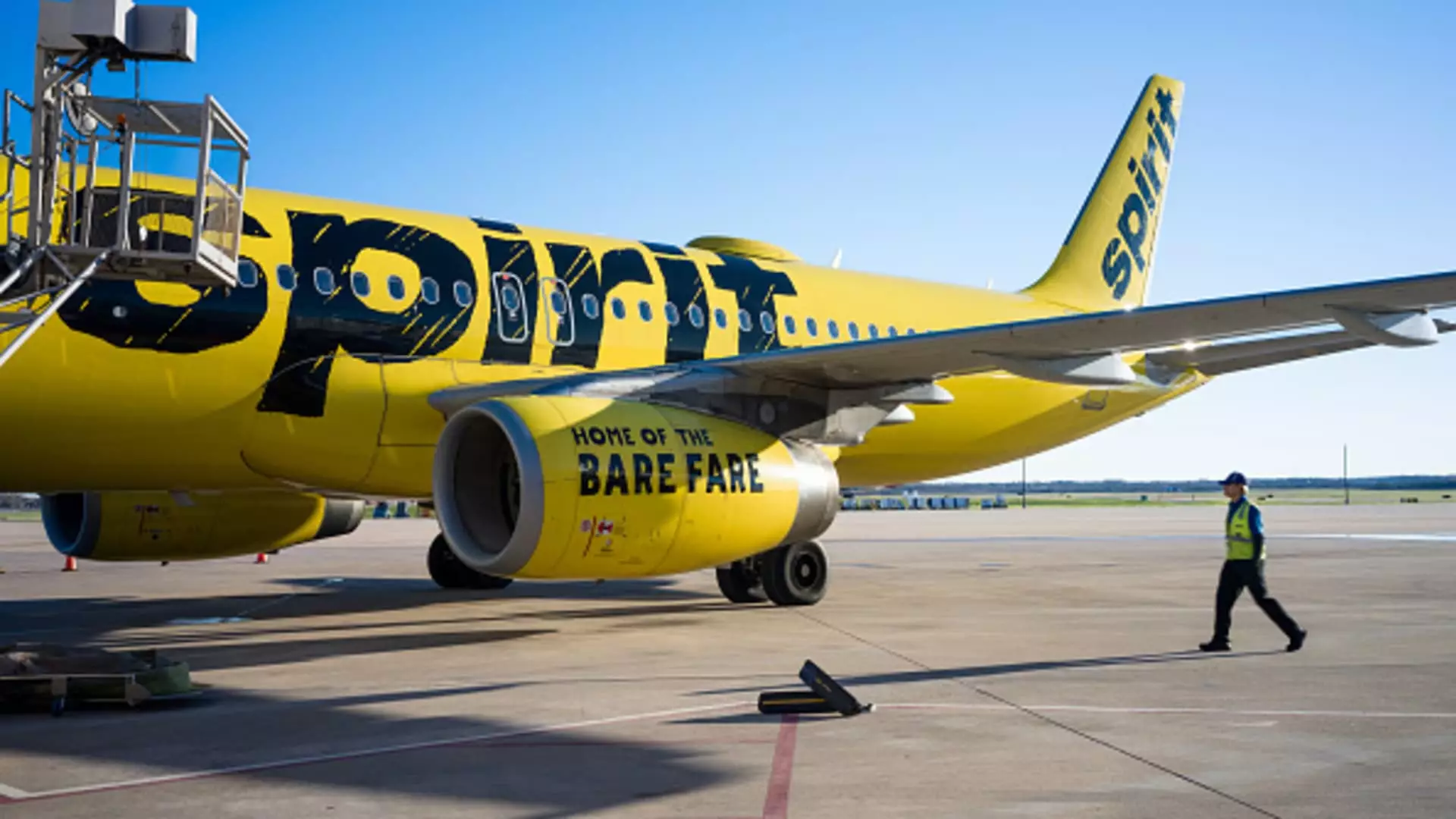In a high-stakes gamble, Spirit Airlines has negotiated an extension with its credit card processor, pushing the debt refinancing deadline back to December. This last-minute decision came just hours before the previous deadline, indicating the urgency and precariousness of Spirit’s financial situation. The airline recently disclosed that it has fully utilized its $300 million revolving credit facility, a move that will ensure liquidity but also raises red flags regarding its operational sustainability.
While Spirit projects to end the year with more than $1 billion in liquidity, the situation remains dire. The airline has been navigating through turbulent financial waters, marked by ongoing discussions with holders of its senior secured notes due in 2025 and convertible senior notes due in 2026. These negotiations are crucial, as they could determine whether the airline can maintain solvency in the face of imminent financial obligations.
The stock market’s response to Spirit’s precarious state has been unforgiving. On the day the announcement was made, the airline’s stock plummeted to new lows, closing at less than $1.50 per share—representing a staggering drop of over 90% year-to-date and nearly 40% just in October. These figures reflect a severe loss of investor confidence and paint a grim picture for Spirit’s prospects. The airline’s struggles are underscored by not only failed acquisition attempts—namely, its bid to merge with JetBlue Airways which was thwarted by antitrust concerns—but also by consistently weak booking numbers.
To cut costs amid declining revenues, Spirit has resorted to drastic measures: furloughing employees, slashing flight schedules, and deferring aircraft deliveries. Such operational cutbacks could save cash in the short term, but they also pose long-term risks. Grounded planes due to a Pratt & Whitney engine recall have only compounded these problems, leading to diminished service and reliability in an industry that thrives on customer trust and frequency of service.
These factors contribute to an increasingly precarious operational environment, raising critical questions about Spirit’s long-term viability. The airline’s strategy seems to indicate a reactive rather than proactive approach, emphasizing survival tactics rather than innovative growth strategies that could help navigate the industry’s complex landscape.
In light of these challenges, speculation about a potential bankruptcy filing has emerged. According to reports, the financial community is watching closely as Spirit grapples with its mounting obligations and dwindling prospects. As the airline maneuvers through these financial hardships, stakeholders will be looking for clear signs of a turnaround or a definitive strategy to stabilize the business.
While Spirit Airlines may have secured temporary relief by extending its debt deadline, the underlying issues remain unresolved. The airline’s future largely hinges on successful negotiations with creditors, a rebound in bookings, and a strategic re-evaluation of its operations in a post-pandemic world. The path ahead requires not just financial acumen but also an innovative vision to restore investor confidence and customer loyalty.


Leave a Reply